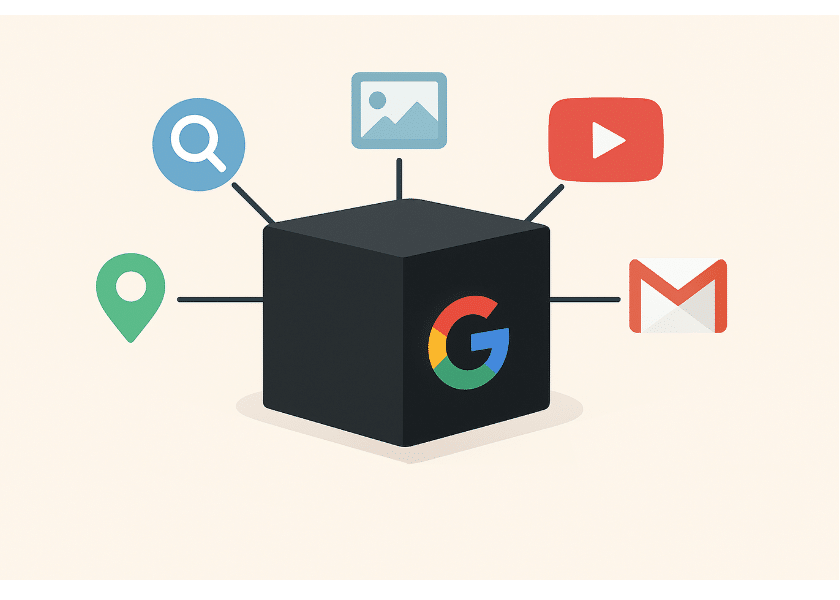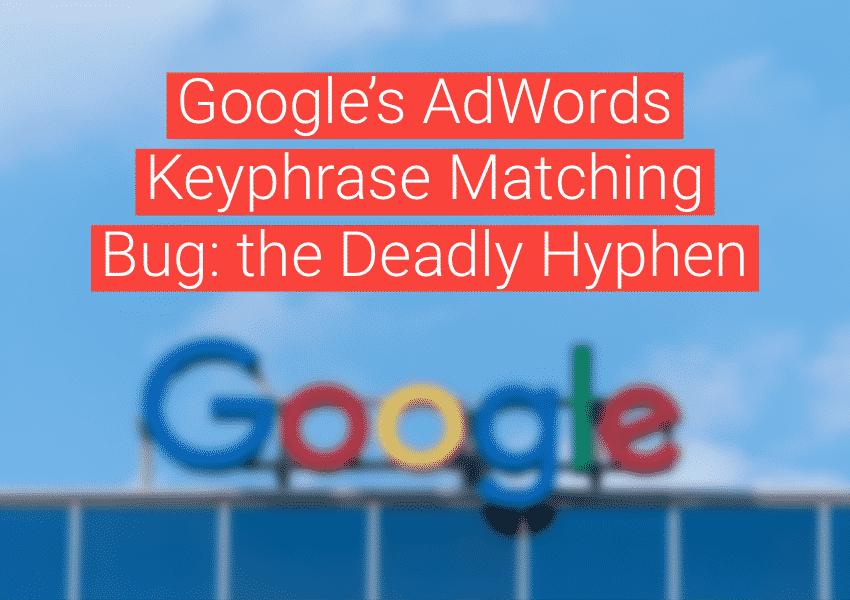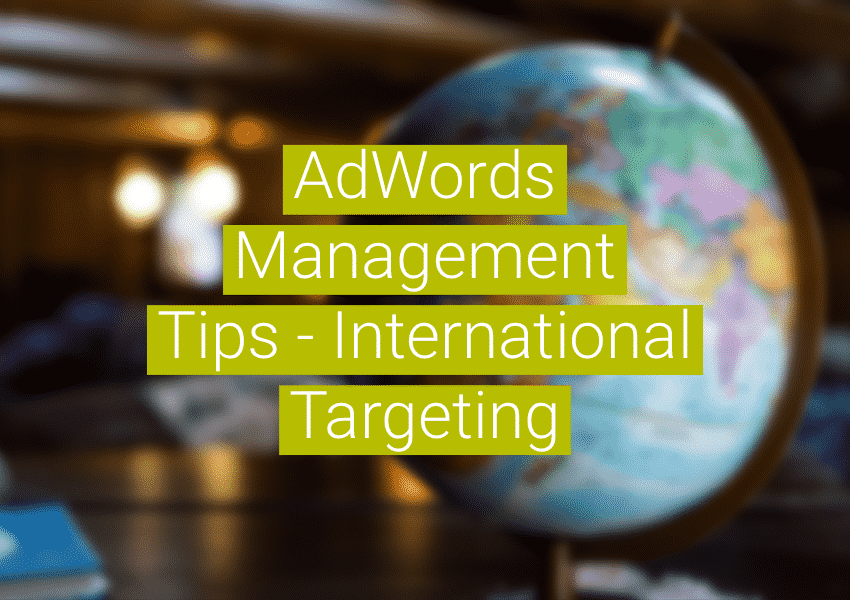When Google launched Performance Max (PMax) – a nearly fully automated campaign type in Google Ads that targets users across Google’s entire inventory – it was bolstered by general enthusiasm for AI and an eagerness to adopt new tech that promised to reduce work hours while improving performance. For those of us who have been running ads since the early 2000s, it was greeted with skepticism because of Google’s history of aggressively pushing advertisers toward low quality inventory. Google has this great product – “search” – but it is limited by the number of searches people execute on a daily basis. The extended Google network doesn’t have this ceiling.
For years Google has worked to expand Google Ads outside the bounds of search because it has enormous revenue potential – rebranding non-search inventory, developing greater audience options, packaging search and display differently, and releasing various ad formats. For all of the effort put into fully utilizing all of Google’s properties and partners, advertisers could counter all of the new complexity with a simple placement report overrun with low quality websites, listing conversions that were undoubtedly spam. Google Search remained solidly Google’s foundation for ads. With limited success behind all of these product releases, Google tactics seemingly took a turn, focusing less on providing targeting options and more on shifting the conversation toward audiences and experiences. Googlers created a narrative:
Decision making is complex, your customers are all over the web, you need to reach them at all points, on all networks and devices, so you are there when they are making purchase decisions. Google Search assists all of these points of contact, but it’s a small piece in the cross-network puzzle. You need to be there in all the moments that count.
The narrative is convincing and makes sense – without the years of experience of seeing the markers of low quality traffic, the actual data sometimes makes sense. The extent of Google’s control over non-search properties (YouTube, Gmail, Discover) and technology (Chrome and Android) further lends credibility to the narrative. But when Google developed a campaign type that hid traffic sources and effectively said “trust us, it’s AI – just focus on your ads’ assets” – it raised giant red flags.
Cynicism (mostly) aside, accepting the narrative and assuming Google is able to accurately hone in on relevant audiences – particularly on higher quality inventory Google controls, but maybe also on the wider display network – here are the stumbling blocks for Performance Max (PMax) and why it is not a PPC panacea.
Incrementality Not Included And The Covenant Of The Trademark Term
When it comes to PPC, incrementality is typically talked about in a couple ways: what is incremental to other existing ads, and what is incremental to organic traffic. In this instance I am not talking about what is incremental to existing ads. I am talking about what is incremental to organic traffic – i.e. ads that produce conversions that you would not otherwise get from other traffic sources if the ads were not showing.
A long time ago, Google released a couple of studies about incremental traffic with ads and organic traffic. The first study from 2011, concluded that, on average, 89% of traffic driven by search ads was incremental to organic traffic. The study wasn’t particularly useful because it didn’t take into account organic rankings or conversions – it was just a very generalized meta-analysis that showed that visits to a website decrease when a company shuts off ads.
Google followed up with a second study in 2012 that analyzed traffic incrementality when a high ranking organic result was present. This study was more useful and concluded: “on average, 50% of the ad clicks that occur with a top rank organic result are incremental.” The study did not take into account the number of competing ad listings. Also, it wasn’t really an answer to the question that was top of mind for most advertisers at the time – “should I bid on my trademark?”
Search Engine Land reported that the lead researcher of the study noted that “the ranking is a good proxy, in certain cases, for branded versus generic terms. In other words, the brand’s organic result is likely to appear higher, if it’s a branded term.” I’d categorize his response as disingenuous at best. A search query for a branded term typically has one website that is very, very relevant to the query. A search query for a non-branded term will have a number of websites that are equally relevant to the query. For branded queries, it is more likely a user will seek out the one website that is very, very relevant in comparison to a non-branded query, where a user might click on any number of listings for websites that are equally relevant.
In other words, an ad for a branded query is much less likely to drive incremental traffic when there’s a number one organic result, compared to an ad for a non-branded query with a number one organic result, because the competition isn’t as relevant. But Google never tried to quantify that difference – we were left with the two studies and a recommendation to test incrementality for your ads account specifically – typically with a geo-experiment (something that isn’t really practical for most advertisers). So why the history lesson? How does incrementality factor into Performance Max? It doesn’t. In fact, it treats all queries and all traffic as if it has the same level of incrementality.
When PMax first launched, you couldn’t even exclude branded queries without excluding it for your entire account (you can now after a lot of complaining to Google by advertisers). PMax treats all conversions equally when looking at the traffic source – a conversion from a branded term, or a term that is less likely to be incremental, is worth the same as a conversion that comes from a term you have no organic presence for. PMax finds low hanging fruit – and the low hanging fruit are typically going to be the delicious apples you already rank organically for – trademark terms if you’re not blocking them. Even if you are blocking them, you then have to think about other organic terms, and what you want to prioritize for your budget.
PMax packages together high-value and low-value traffic, and Google likely has built in levers to manipulate the content of that package for their benefit, at your cost. To Google’s credit, this is how a lot of accounts are managed. The average cost per conversion has to be at a certain level overall, and there isn’t a lot of emphasis on how you get there. But among account managers there is an understanding that if you go overboard on the easy stuff, it won’t help the business overall, so you have to break it all out, and the client has to understand how it’s being handled. It can’t be a black box.
AI But Without A Human Eye For Context
Besides incrementality, Google’s equal treatment of conversions outside of any other context, creates a second problem: for lead based accounts, not all conversions are good conversions. Consider this example where two conversions are not equal:
1. A search engine user queries Google for the phone number of a business that is not a competitor to your business but is tangentially related based on the category of products it sells. The query produces a “calls from ads” conversion from a mobile ad for your business after the user incorrectly assumes Google listed the phone number of the business they were actually trying to reach, and they call your business.
2. A search engine user queries Google for a product your business offers – a product a range of other businesses also offer. The user is familiar with the product and is in a bind to get it as quickly as possible, rather than click through to your website, the user produces a “calls from ads” conversion by calling a number from a mobile ad.
Here we have two conversions of the same type, but number two is much more valuable than number one. In scenario one, the user is not in the market for your products, but is still producing a conversion. In scenario two, the user is in the market for your products and is ready to make a purchase. Number one is not an anomalous example – it’s something that happens, even when you have a 60 second phone call threshold for a “call from ads” conversion to be measured. A person bidding on keywords with the appropriate match type and looking through search query reports wouldn’t have to be worried about number one. A person running a PMax campaign has to be very worried about number one. In some cases it may be manageable through negative keyword additions, but there are scenarios where this is not practical. This gets even tougher when we’re no longer talking about search engine queries, but purposely hidden traffic sources on the display network. For lead-based campaigns, form submissions are counted as conversions, and these can have wildly different values.
Google has a couple answers for situations where conversions are not equal to help PMax target appropriately:
- Measure values for conversions, and bid based on conversion value.
- Import conversions from a CRM only after they have been vetted or result in sales.
In the example above, solution one doesn’t really solve the problem. Measuring conversion value can help distinguish between different conversion types that have different average values, but when conversions of a single type have large differences in valuation, using averages doesn’t help. We know that the number one scenario is of lower value because of the context of the search, and Google’s AI doesn’t yet understand context the way a human does. It’s making a mistake a human wouldn’t make.
Likewise, in the example above, solution two doesn’t solve the problem because there isn’t a good way to connect the Google Ads phone call to the CRM phone call. The CRM doesn’t have an identifier to link the user’s activity on Google to the activity in the CRM, so we can’t import a conversion. Even if we did work out a way to link the two, importing conversions has at least a few barriers for lead-based businesses:
- The CRM might not have an integration with Google Ads. It might not be customizable in a way that allows custom fields required for building a conversion import for Google Ads.
- The business might have a very long sales cycle that makes it difficult for scoring leads and deciding what qualifies as a conversion.
- The actual volume of revenue-generating leads is probably not enough to produce statistically significant data for Google Ads to work with. This is probably the most important barrier of the three. In lead generation accounts, it’s very common to be working with low conversion volume compared to the budget. You have to make decisions about quality based on context without statistically significant data.
What about ecommerce businesses? They are not lead-based, and ecommerce conversions are hard to fake, so they won’t require any analysis surrounding context. In fact, I wouldn’t trust any PPC manager that doesn’t have experience with an ecommerce account. Having that range of experience gives you a better understanding of valid conversions and where they come from, and how to spot suspicious activity in Google’s system. When you sell a product and it records revenue, that’s usually valid, and the value is built into the measurement. Ecommerce accounts use well-defined, well-quantified conversion that you’d expect PMax to do a better job with. For e-commerce, the points about incrementality are still valid, and there’s typically another dimension to it with repeat customers (that Google has settings to try to address). But there are lingering issues for determining value. Consider this example:
You own an e-commerce store that sells a wide range of products for a particular industry. It’s not uncommon for a customer to need several of those products at a time. A user queries Google for one of the products they know they need. They get to your website, see you have what they want in response to their query, but now they’re seeing you also have other items they need. That person adds all of the items to their cart and purchases them in a large value transaction.
As a manager of an account, I might see this transaction, the search query that produced it, and know that the query itself was not actually worth the amount of the transaction – that this was a somewhat unusual instance where the amount of revenue produced is not resulting from the particular query the person used. The query is really representative of a much larger categorization of queries that all could potentially produce a large-sized order on occasion. Google PMax, however, does not know this and starts going all-in, overestimating the value of that query. For ecommerce this is an example of conversions not being equal, and context being the real guide to optimization. While you have a lot of concern with PMax for lead-based accounts, e-commerce accounts could possibly have issues too.
Using PMax Effectively
Google consistently categorizes PMax as a supplemental option:
“It’s designed to complement your keyword-based Search campaigns to help you find more converting customers across all of Google’s channels like YouTube, Display, Search, Discover, Gmail, and Maps.”
They do not claim it is meant to be a standalone campaign, or even a primary driver of your campaign strategy. However, it is not designed this way. It consistently trumps search campaigns in query targeting on google.com, and it replaces traditional shopping campaigns. Google is clearly trying to make it into something bigger, but it is only fit to be a backdrop to your primary campaign efforts. There is a tendency in PMax to focus on traffic that is not incremental in order to buoy weaker inventory across Google’s entire network.
Given Google’s history with the display network and audiences definitions, and Google’s struggles to get advertisers to expand into channels that are less fruitful for direct response, the burden of proof for the new narrative and PMax results lies with Google. Hiding performance by network and not releasing detailed conversion metrics shows that Google is abdicating this responsibility. And for that reason, advertisers who have been doing this for the last 20 years are well-advised to tread lightly with Performance Max because Google is up to more of the same. PMax is not a PPC panacea.
Ready to Enhance Your Multifamily PPC Strategy?
Reach out to us to discuss how we can tailor a strategy to your unique needs.




